.webp)
Ehsan Fazili/Srinagar
While the Jammu and Kashmir government is finalizing a grandiose plan to connect all major Sufi shrines to form a pilgrimage circuit, the Union Territory's Waqf Board chairperson Darakshan Andrabi says that religious shrines should be included in regular tour packages as well.
Speaking with Awaz-the Voice, Andrabi, who is the first woman chairperson of the Waqf Board in India, said, “In my opinion, all shrines in Kashmir should be brought on the tourist map. Tourists should be going to religious shrines while on their way to different scenic destinations like Pahalgam, Gulmarg, Sonmarg, or Yusmarg.”
She said, “We have Hazratbal shine (where Prophet Mohammad’s relic is stored) on way to Sonamarg from Srinagar; Aishmuqam on way to Pahalgam in Anantnag district and the shrine of Nund Rishi (Chrar-e-Sharief) on way to Yusmarg.”
Andrabi said inclusive tourism packages will further boost the footfall of tourists to Kashmir. She said the Waqf board and the Waqf Board are working to safeguard the shrines and preserve their uniqueness. Departments like Archeology are looking after the Khanqah-e-Moalla shrine in Srinagar after restoring its architectural glory.
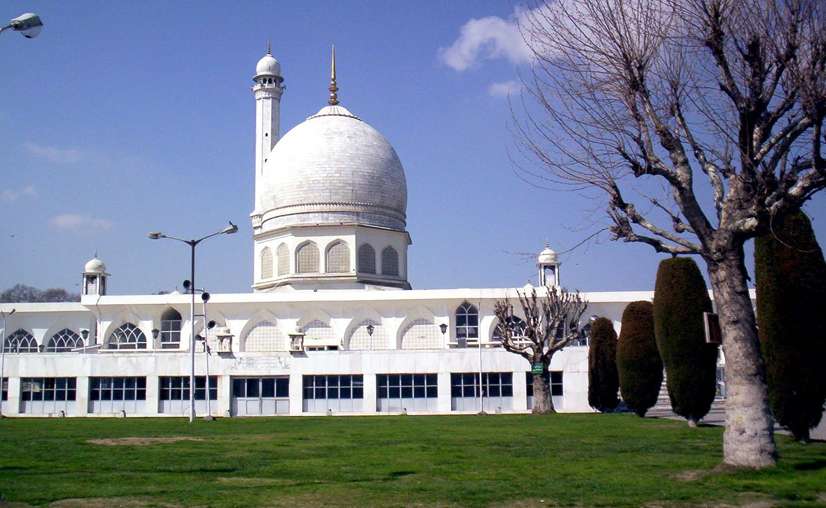
HAZRATBAL SHRINE
The government sources say the development of the three specific religious pilgrimage circuits in J&K includes a Sufi shrine of Kashmir and two Hindu circuits one each in the Valley and Jammu.
At present, the shrine of the Mata Vaishno Devi in the Katra region of Jammu is the most visited religious place in J&K. Being among the top ten richest shrines across India, the cave temple’s revenue in the year 2020-21 was pegged at Rs 220.33 cr even though it was a lean year due to the Covid-restrictions.
The shrine’s management is a template for other religious places in J&K It’s governed by a government-appointed board called the Shi Mata Vaishno Devi Shrine Board (SMVDSB). Its donations are ploughed back into running institutions like a nursing college, a university, and a super specialty hospital.
However, sources in the government say work is afoot to improve the connectivity to the Sufi dargahs before announcing the Circuit. Finance Minister, Nirmala Sitharaman, while presenting the first budget of J&K Union territory in the Parliament, announced the government's intentions to develop the Sufi pilgrimage circuit.
Apart from the famous shrine of Hazratbal, which is well known across India, the proposed circuit will include dargahs which are mostly visited by locals. The circuit starts from the shrine of Makhdoom Sahib through Khanqah-e-Moalla in Srinagar to Watlab-Baba Reshi in North Kashmir and Pakharpora-Aishmuqam in South Kashmir.
The Hindu pilgrimage circuit in the valley is planned to begin from Shankaracharya Temple in Srinagar through Mata Khir Bhawani in the Ganderbal district to Martand temple at Mattan in Anantnag, South Kashmir.
In Jammu, the tourist circuit is to begin from Shiv Khori through Uttar Bani, Purmandal to Mata Sukhrala Deviji.
Various departments including Culture, Archives, Archeology and Museums and, Wakf Board are currently engaged in doing their part of the renovation and works to give a final shape to the plans.
Sources said the government has "directed the concerned to conduct a detailed census of existing Shrines and festivals celebrated there” which would help in the formulation of a comprehensive plan for the promotion of Sufi Circuits. Following shrines of Sufi saints are being refurbished for the circuit:
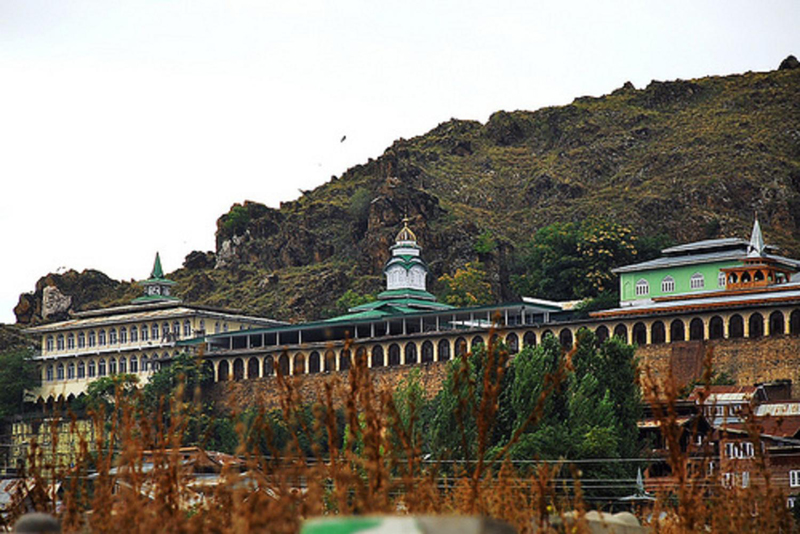
Makhdoom Sahib
Sheikh Hamza Makhdoom, popularly known as Makhdoom Sahib, was a Kashmir-born Sufi mystic of the 16th century. He was born in the Tujar village of Sopore in North Kashmir in 1494. He learned Quran in the village and later joined Madrassa and seminaries for religious education. The Sufi Saint passed away in 1576 AD in Srinagar. It was 14 years after his death that Emperor, Jalaluddin Akbar built his shrine in the foothills of Hari Parbat hillock in Srinagar. A cable car for pilgrims to reach the shrine by avoiding a flight of 200 steps was commissioned in 2013. Two years later, however, it was grounded on safety issues. As and when commissioned, the 550 meters long ropeway can carry 200 passengers to the shrine in one hour.
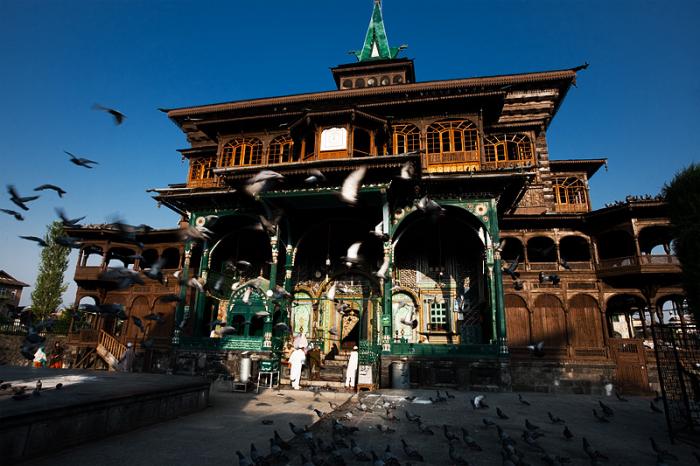
Khanqah-e-Moalla
The Khanqah-e-Moalla shrine located on the right bank of river Jhelum in downtown Srinagar was built by Sultan Sikandar in 1395 to commemorate the visit of the 14the century Sufi saint, Mir Syed Ali Hamadani. It was the first mosque established in Kashmir after the Sufi Saint from Hamadan, Persia, spread Islam in Kashmir. He is also known as Shah-e-Hamadan (King of Hamadan) and Ameer-e-Kabir (The Great Commander). The saint is believed to have visited Kashmir on three different occasions between 1373 and 1384. Born in 1312 AD, Shah-e-Hamadan died in 1384 in Kashmir and was buried in Khatlan. The shrine was majorly revamped in 1480 AD. The shrine, located in the heart of Srinagar, is thronged by devotees throughout the year.
Baba Shakooruddin shrine
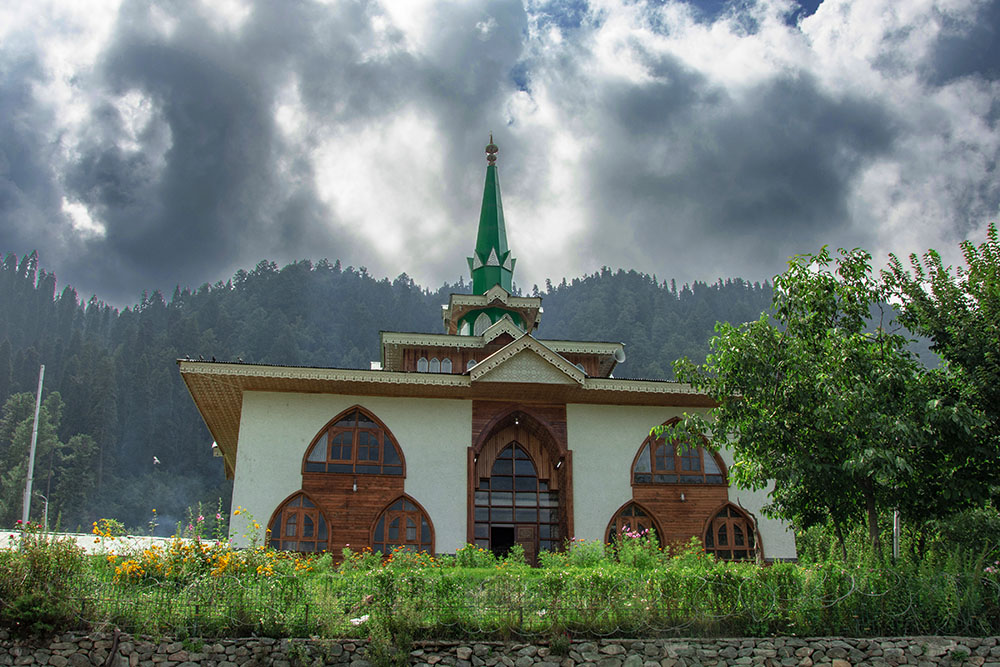
The shrine of Baba Shakooruddin
The shrine of Baba Shakooruddin, a 15th-century Kashmir-born saint, is situated at Sharikot hillock near Watlab, Sopore on the Sopore-Bandipore road in North Kashmir. It overlooks the magnificent and panoramic Wular lake, Asia’s largest freshwater lake. Legend has it that as a child, Bab Shokooruddin worked in the field. His mother carried food for him every day. One day she met two pious men who asked her to convey to her son that he should read a verse from the Quran, and reduce the quantity of his food. He followed the advice and enquired from his mother about the direction in which the pious men had gone. He followed the direction and reached Chrar-e-Sharief. There he met Sheikh Nooruddin Noorani, the founder of the Sufi order in Kashmir. He advised him to go to Aishmuqam for spiritual knowledge from Zainuddin Rishi. Later he meditated in the cave and later he was advised to go to Watlab.
Baba Rishi
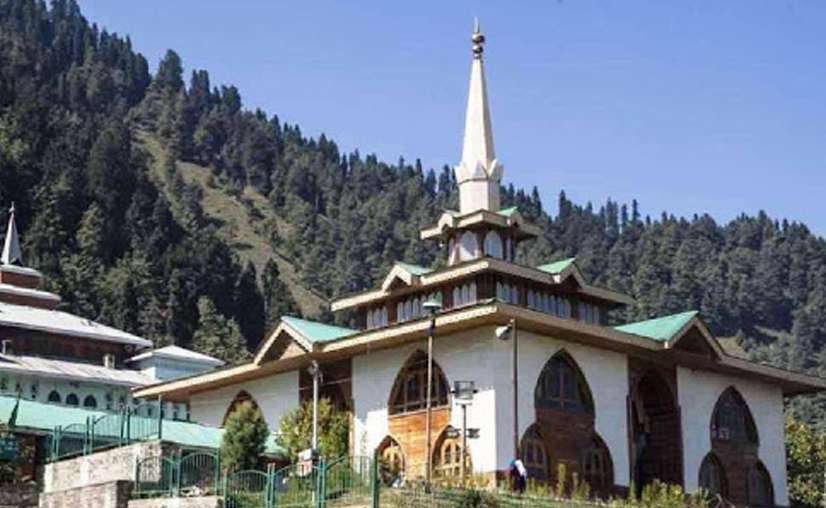
The shrine of Baba Payamuddin Rishi
The shrine of Baba Payamuddin Rishi is located near Tangmarg, about 13 km short of the tourist resort of Gulmarg in Baramulla. The saint passed away in 1480 AD after years of meditation at the place where today the dargah stands. His resting place is inside the premises. “The shrine is popular with Kashmiris of all faiths since they believe that praying there grants boons. They do revisit for thanksgiving and make an offering after their wishes are fulfilled. The legend has it that Baba Payamuddin had worked as an assistant to Baba Shakooruddin at Watlab for many years. Later he was asked to leave and finally settled for a long spell of Meditation near Tangmarg.
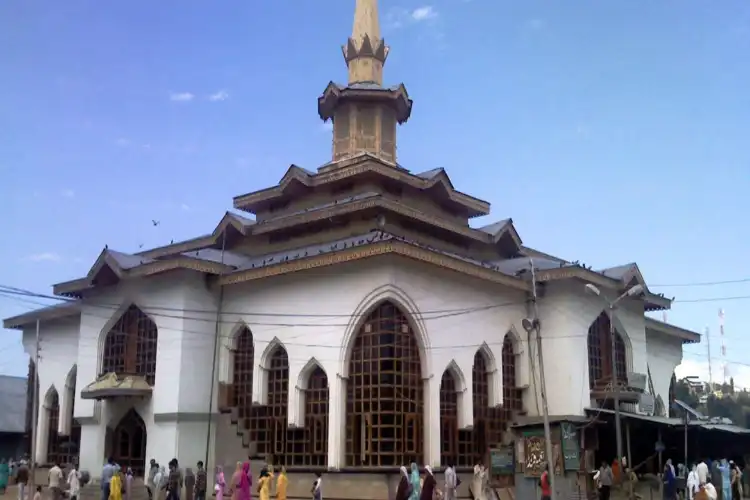
The shrine of Syed Balkhi at Pakharpora
Pakherpora Shrine
The shrine of Syed Balkhi at Pakharpora is near the tourist resort of Yusmarg in Budgam district. Balkhi came from Afghanistan in the early 15th century. He was a disciple of Sheikh Noorudin Noorani Wali as he considered him his peer-o-murshid (spiritual guide). The shrine is a heritage site as the architectural structure is many centuries old.
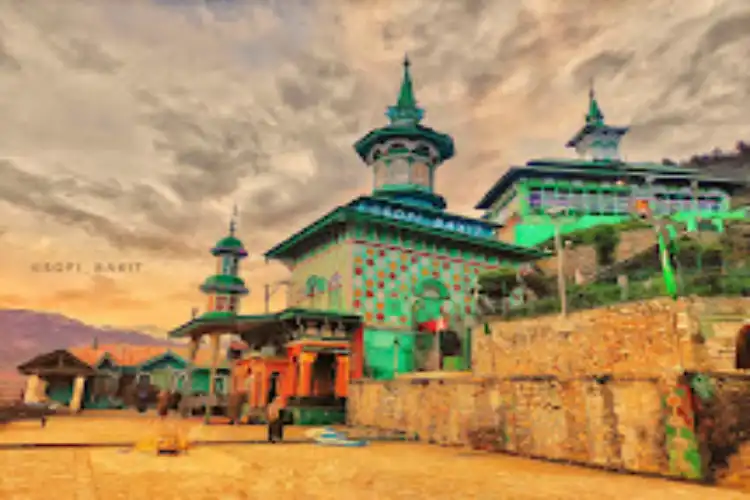
The shrine of Sheikh Zain-ud-Din at Aishmuqam
The last destination of the pilgrims would be the shrine of Sheikh Zain-ud-Din at Aishmuqam, about 20 km short of the Pahalgam tourist spot in the Anantnag district of South Kashmir. The shrine stands in honour of the 15th-century saint, who was one of the chief disciples of Sheikh Nooruddin Wali. Aishmuqam is considered sacred by people belonging to different religions.
The shrine is thronged by thousands during the annual Urs and Zool (Illumination) festival. Baba Zain-ud-din Reshi, more popularly known as Sakhi- Zain-u-din of Ashmuqam, is the most celebrated Rishi Saint of this land and also one of the founders of the Reshi order in Kashmir. He is known for his generosity and People in south Kashmir believe that whosoever visits the shrine will get his wishes fulfilled. His urs is celebrated with pomp and show and religious devotion.
